View our Guide How to Build a Marketplace in 10 weeks x


How do companies like Uber, Amazon or Ebay make money? What about startups like Upwork, RentabiliTree, Spiffy Carwash, or Hired? If you're thinking these companies all have wildly different business models, you'd be correct. But another way to think about them is that they're all online marketplaces.
Every entrepreneur, CEO, and business owner wants to build a sustainable online marketplace — but they don't always know how to achieve it. There's no one formula that can guarantee success — what works now might not work later on and vice versa. That said, there are certain financial models you should consider when you're deciding whether or not to build a sustainable marketplace.
The most popular business model for marketplaces is called the two sided network. First described in a paper written in 1990 by Wayne E. Baker, it simply describes the value exchanged both ways between the two sides of the marketplace. The meat and potatoes of this model is to attract as many demand side users as possible through a "sign up and compare" strategy, while at the same time reducing the number of supply users and cultivating supply side.
Five years ago, marketplace business models were very much in fashion. Everyone was building marketplaces as the next big thing. AirBnB, Uber, Zalando and even eBay itself were great examples at the time of some of the world's fastest growing startups all sharing a similar model that had been tested to prove its scalability.
In this article we will tell you about marketplace types, business models and marketplace business models examples. Marketplace business model is a great way to start your business without a huge investment.
Table of content:
There are a lot of marketplace business models you need to know, while they all have similar characteristics, they also depend on the product, number of involved people and financial model. Let's take a look at them all to launch your marketplace business.
Product marketplaces and services marketplaces are two types of online platforms. In both, the platform connects customers with third-party producers. In a services marketplace, the producer is providing a service; in a product marketplace, the producer is providing a product as a third-party seller or distributor.
A B2B Marketplace is a digital platform that enables companies to buy, sell, and partner up in bulk. It's like Amazon for businesses. You'll find these platforms not only useful, but also enjoyable when you choose the right one. For example, suppliers get a satisfaction guarantee, as well as an alternative sales channel to add additional revenue.
B2C (business-to-consumer) marketplace is a model in which the seller sells products & services directly to consumers, who are the end-users. B2C has become intensely popular in recent years, as end-users started buying from the retailers' marketplace stores. This model has a global reach for the end-users, so even small businesses operating from homes can sell products to customers on the other side of the world. The traditional stores that aren't making any profit can shut down their brick & mortar store and spend a fraction of what they were spending previously on marketing and set up marketplace store with less capital investment to gain huge profit.
C2C marketplaces are online intermediaries that match people who want to sell their own goods with people who want to buy those goods. One of the most famous C2C marketplaces in the world today is eBay. It has over 159 million active users and 12 million new registered users each month. BlaBlaCar is also a C2C marketplace; it's a popular ride-sharing platform that makes it easy for drivers to find passengers going the same way and share costs. Another example is Alibaba's Taobao Marketplace; this platform lets anybody set up an online shop and sell products directly to consumers - no middleman involved!
Peer-to-peer marketplaces are popular e-commerce development trends. A two-sided marketplace, peer-to-peer marketplaces eliminate the distance between individuals that provide products or services and clients that purchase them. For example, you can lease your New York apartment on Airbnb and book a room with a delightful view somewhere on the Amalfi Coast at the same time.

A two-sided market is a business model in which both sides of the market—buyers and sellers—can trade with each other. Platforms that serve as a marketplace for more than one type of buyer or seller can create value by simplifying and accelerating transactions, as well as lowering their cost for the parties it connects. As a two-sided network grows, successful platforms can scale. Users, seeing a larger potential marketplace, will then pay a higher price to access the platform.
The idea of the two-sided market is to have many agents on both sides of your network. If you have a marketplace, there are a lot of people trying to find or provide the goods or services that you offer. However, if you can get someone else to pay you to reach those people, then it's a good deal. You don't want prices going down though, since that's how you make money! In the case of a marketplace, as more sellers provide goods/services on your platform, prices should go up; and as buyers go elsewhere to purchase something (to avoid paying a premium), prices should also increase.
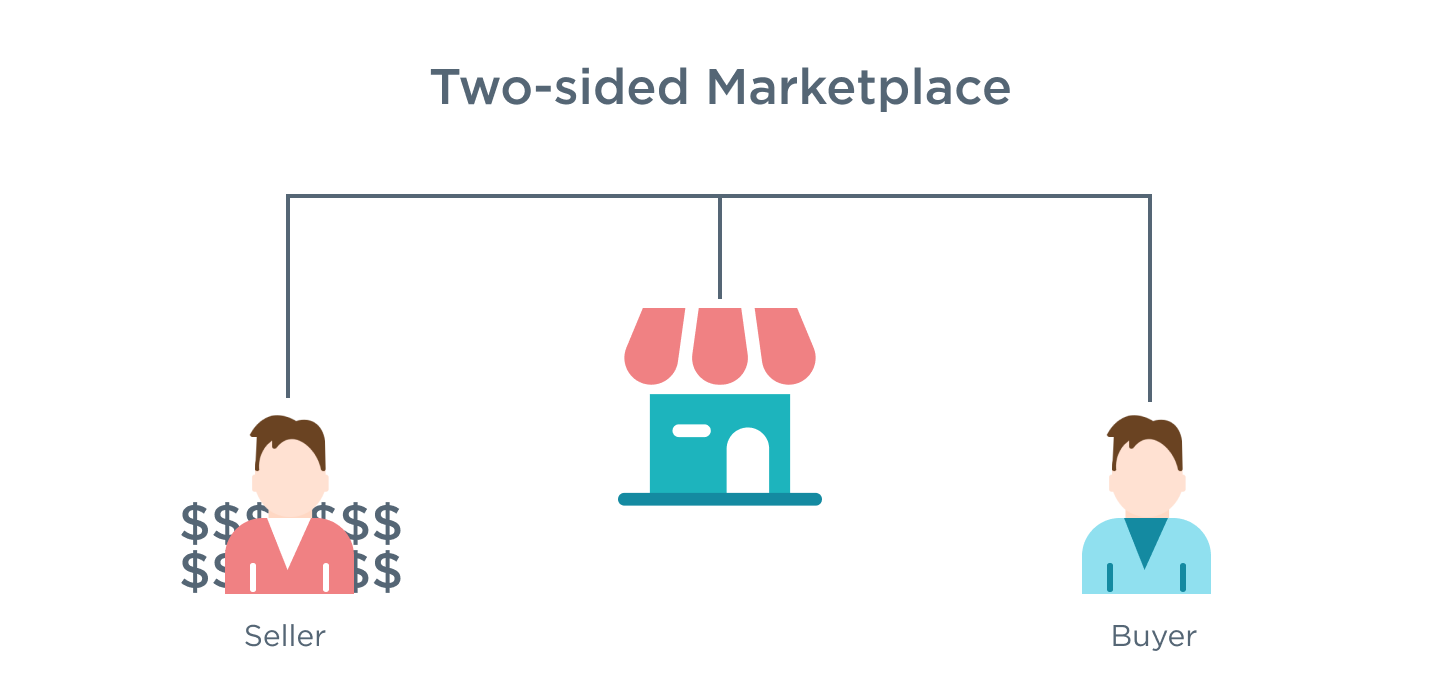
A three-sided marketplace is a type of business model that connects three groups in value exchange: the end customer, an intermediary, and the producer. The intermediary role is sometimes referred to as a "market maker," while the producer is also a party that assumes an ownership position in the product.
They are like a black box. You put your product inside and money comes out. As an entrepreneur, you can raise huge amounts of capital using 3rd party networks. The network itself is the customer acquisition channels and they'll always win. Your company doesn't have to spend time finding customers from scratch - it has a ready built audience to sell to.
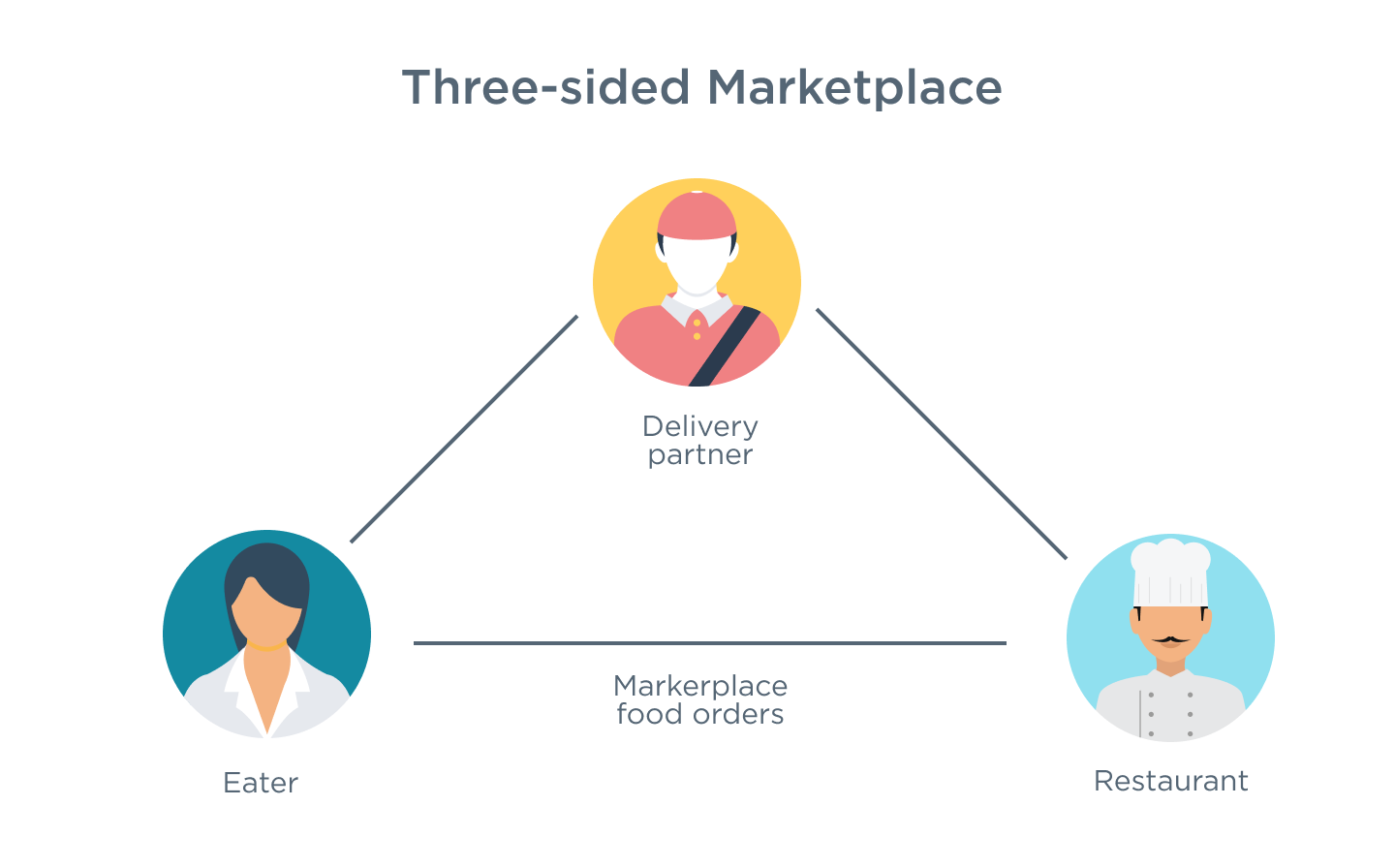
A commission marketplace is a company that connects buyers and sellers, taking a small fee on each transaction. The commission model may work when a company borrows ideas from the traditional marketplaces but injects modernity into its service. For example, eBay charges sellers a listing fee and an insertion fee. At the same time, it charges buyers as well.
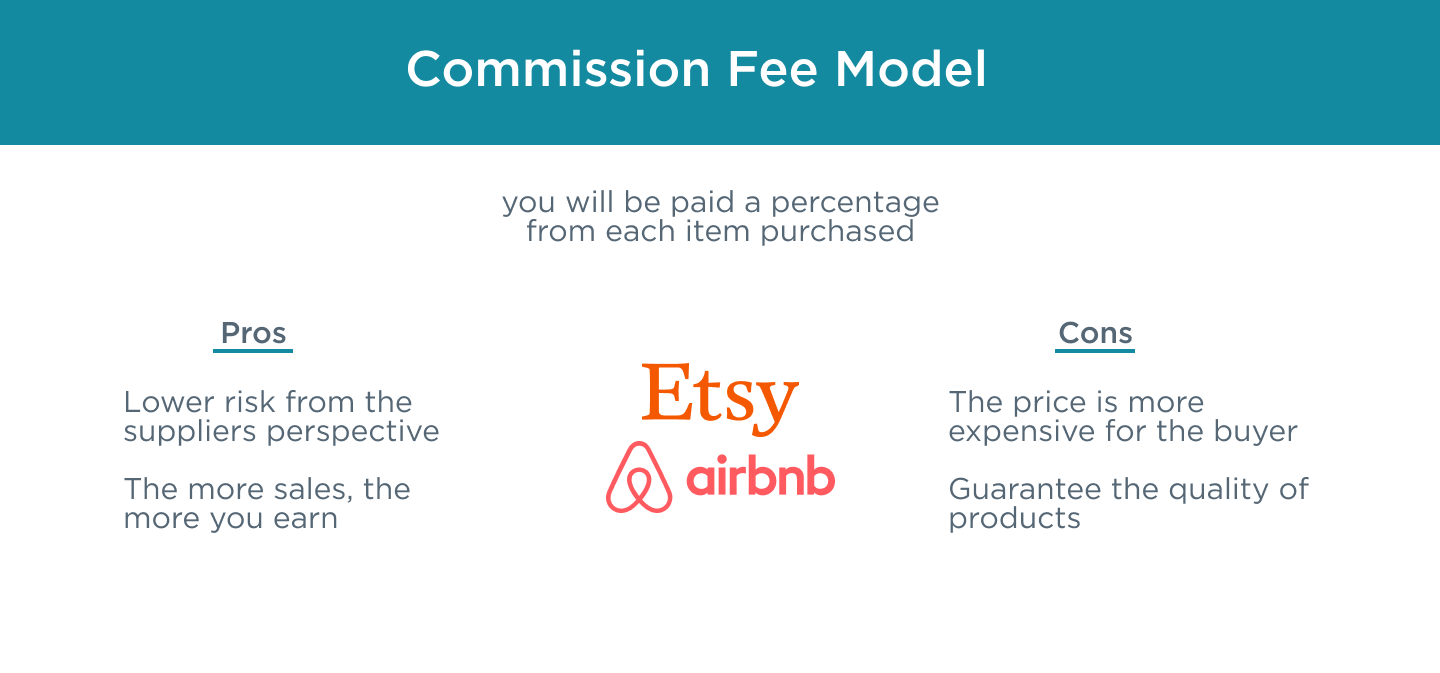
Online marketplaces charge subscription fees for access to the platform. Globally, more than 5 million Craigslist users pay $20 per month to use the service.
Subscription model is an additional form of a marketplace revenue business model. The subscription model is earning more and more popularity in the recent years due to it's passive income potential, where a user pays an annual or monthly fee for access to the marketplace business' platform. Unlike some other marketplace models, such as e-commerce, this type of marketplace provides recurring subscription fees that mean that even if a user does not perform any transactions within the business' platform, the business still generates money for providing the service.
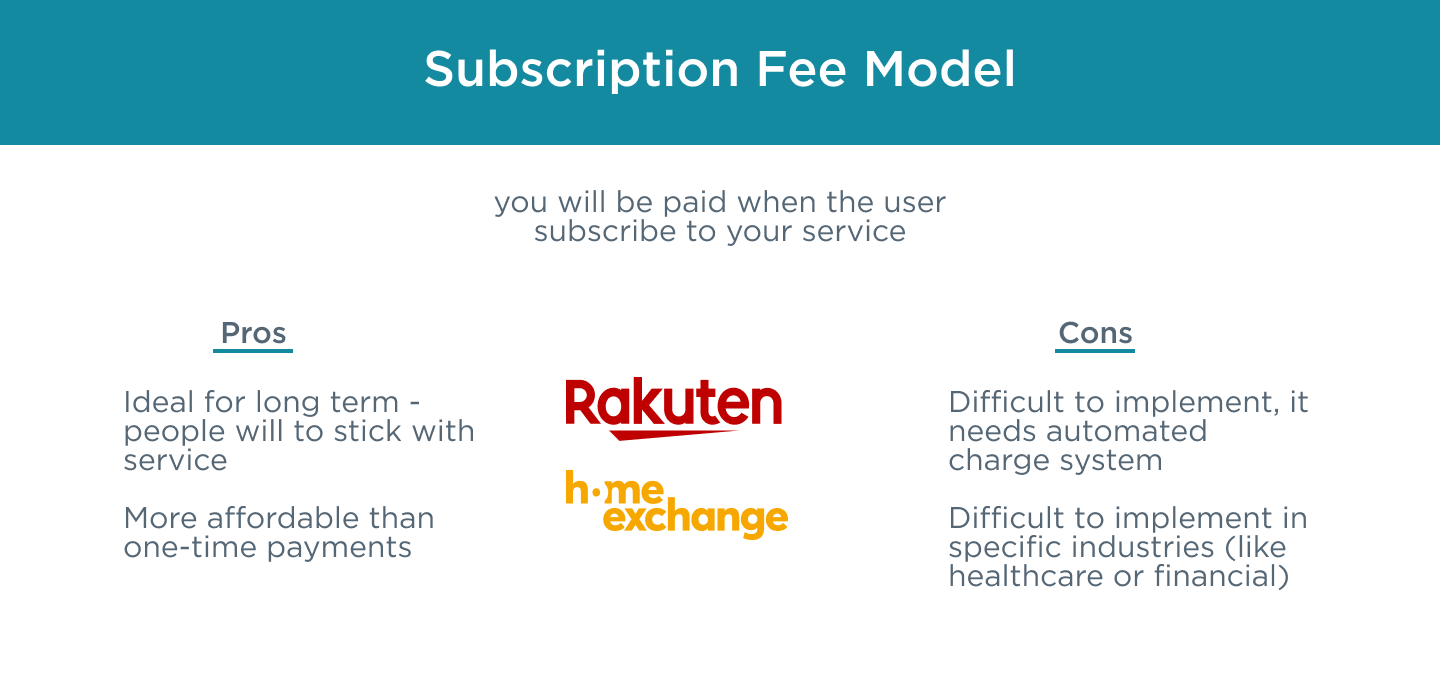
The listing fee business model is another approach to online marketplace revenue. While commission-based marketplaces only charge commission if the item is sold, they may miss out on revenue from less popular merchandise. Listing fee models allow tackling this problem and getting profit from each ad on the platform.
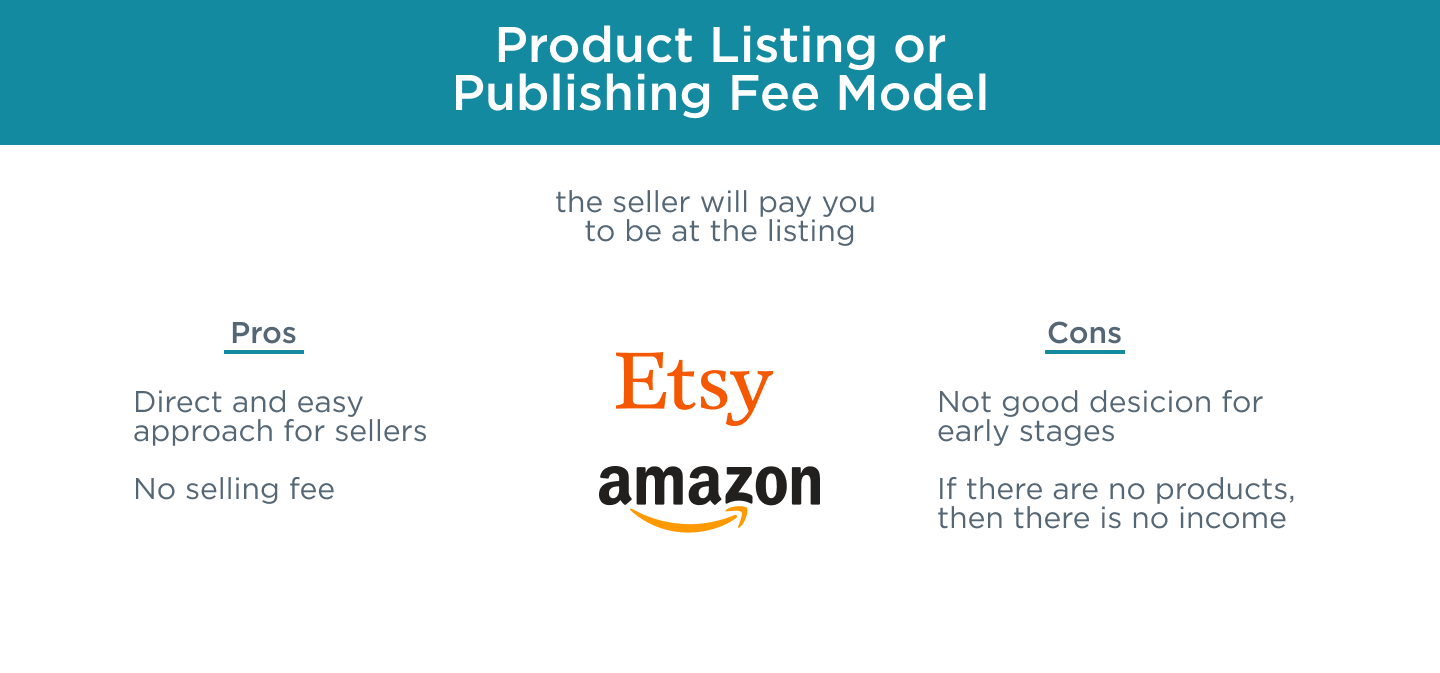
This model is common practice for services like Airbnb and Uber where sellers or service providers get a premium listing that is shown first when customers search, so they are more likely to be chosen. The idea is that you pay an extra amount to have something or someone be of higher value than anything else on the site, therefore attractive to consumers searching the internet to find what they need. If you are offering a service or product it can almost seem like you are making a purchase for a premium listing, as this could mean more sales in the end.
Instead of struggling to find the best vendor for buyer project, marketplace can provide a consultation. There're many kinds of support: business startups, specialists, HR systems implementation, website development. By earning money from consulting, you will help buyers find the best specialists in the field and explain what selection criteria are important. Marketplaces as a Clutch can help with this task by creating an opportunity for you to get connected with the best partners all over the world. They will help you find the right stack of developers: the right combination of technologies, designers and more. Filter out who is good and who isn't, at which cost they'll work, and what project requirements are important.
In the bidding model, the marketplace owner finds clients for vendors. Vendors can bid on those potential clients and the highest vendor wins the client. This is a great solution for old and new businesses. It can be utilized by both the staff who already have experience in the field, or the new staff who just came to the industry.
If you're running a contract-based or service-based marketplace and don't process orders through your platform, charging lead fees might be a viable marketplace business model for you.
In this case, your vendors will be able to browse the list of potential clients or deals, but will need to pay to view the details or an individual deal.
When it comes to charging the lead fee, you have two distinct options: charge to access each lead charge for successful deals only
In the first case, your vendors will have to pay to access the details of the lead or the deal, whether or not the outcome is good for them. With the latter option, you'll only charge your vendors if the deal with this particular lead goes through – however, here you'll need to have some control over the deal flow
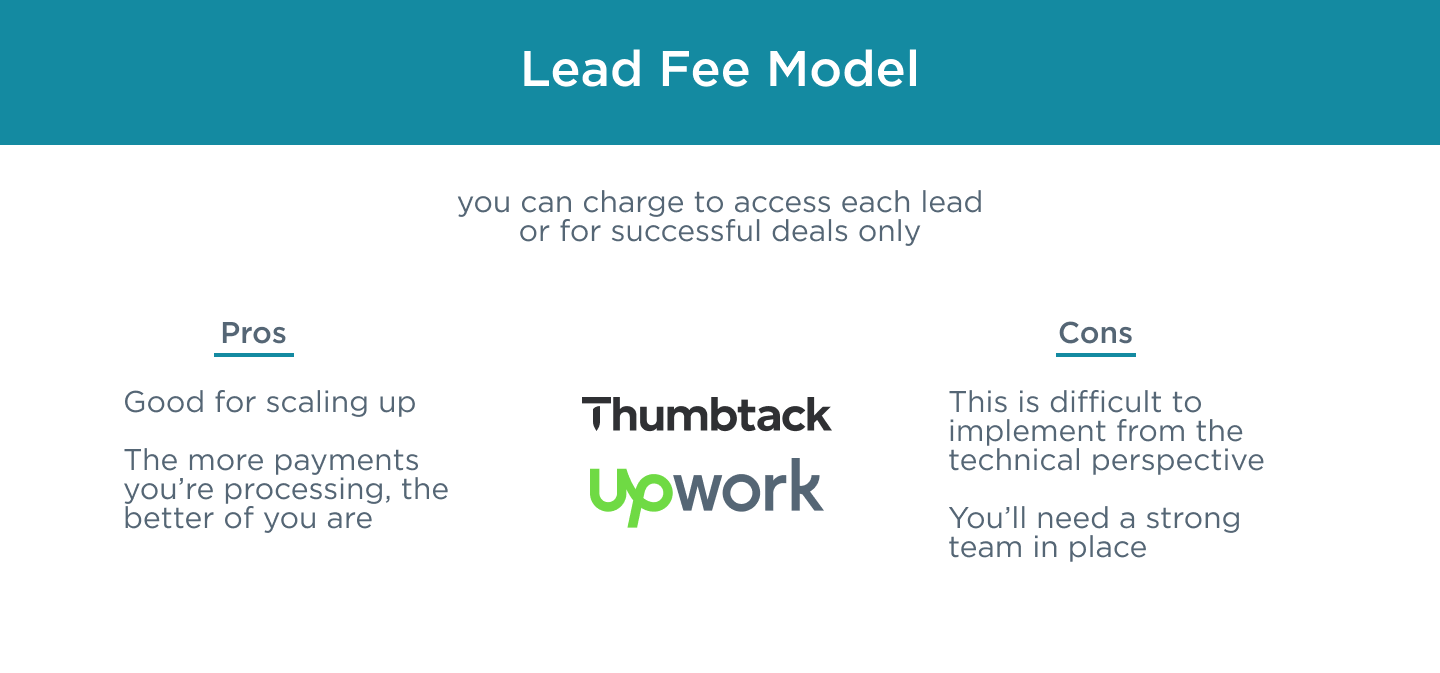
A freemium marketplace is a platform that provides free and premium features to users. Freemium marketplaces start with free features and provide premium features as part of their business model. A successful freemium marketplace grow its customer base exponentially, producing healthy profits for its owners.
Also this type allows startups to turn potential customers into paying users. It enables startups to compete with larger, more established companies that don't have this option. In order to work, it needs to be treated with every bit of care and attention due a paid marketplace.
We know how hard it is to start and run a successful business. That’s why we created a template that makes it as easy as possible for you to build an online marketplace. With our template you can have multiple users selling on your platform, from all over the world. We make it easy for them to manage their listings and sales, so you can focus on growing your business.
We have taken all aspects into consideration to build this marketplace builder template which will take care of your inventory, payroll and all other issues.
Our Marketplace Builder Solution is the perfect way to launch your online marketplace fast. We’ve taken all the guesswork out of planning, building and launching a marketplace that is customizable, scalable and profitable. In just 2 months you can have your own online store up and running with our marketplace builder solution.
Leaving your marketplace setup to the experts means faster, less stressful results.
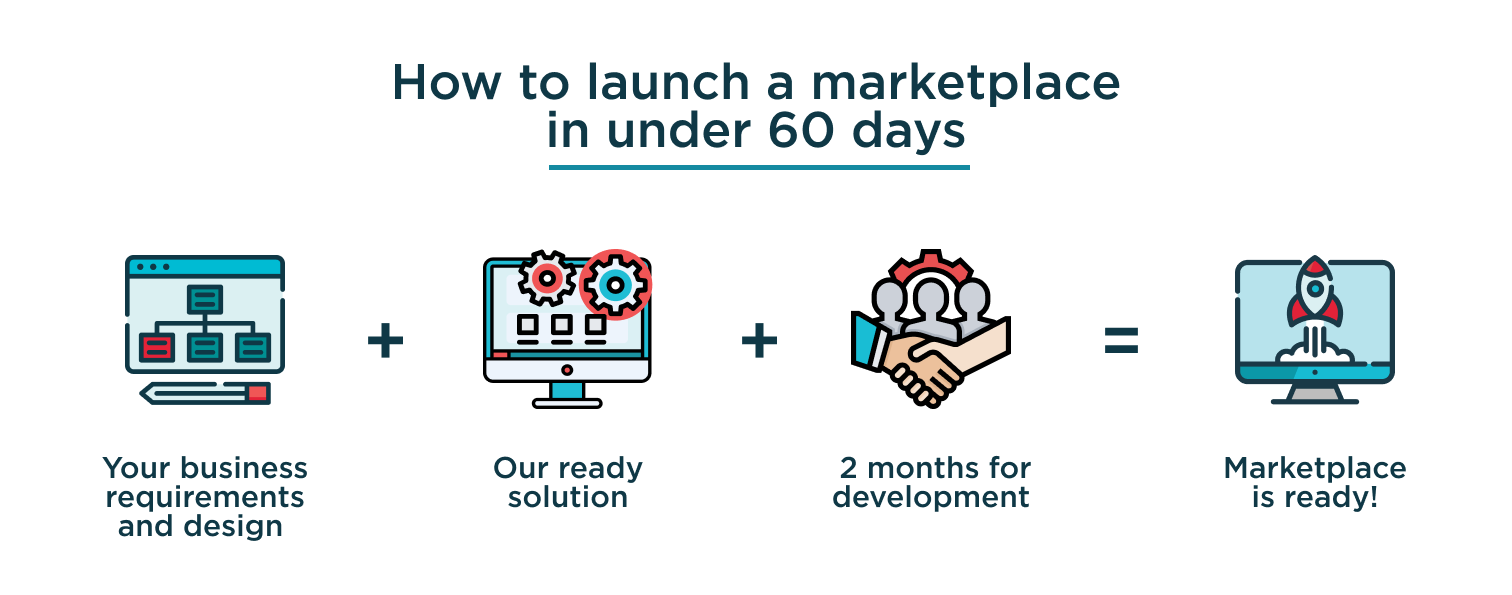
Generally speaking, the best business models result when you have a clear understanding of your users' needs and the product's uniqueness. These two factors work hand in hand to make your solution stand out. Do you remember those examples? They're leading companies on their market segments: Airbnb is a perfect example to follow if you need a rental service; Amazon, eBay and Alibaba are great models to follow if you are going to sell products online. The bottom line: never copy a business model that is clearly not working.
Here, we've tried to identify the differences between a few of the more popular and successful online marketplace models, as well as some of the pros and cons of each. Hopefully this article should serve as a helpful resource to you, no matter what kind of marketplace business model you're looking to implement.
Marketplaces, platforms and brands have a big satisfaction in development. For any kind of marketplace, the project is for us like a new-born child. We create that same feeling with all our customers, who trust and choose us. Check out our portfolio with marketplace cases.
Contact us and we will discuss your needs in details to ensure you get the results you deserve.